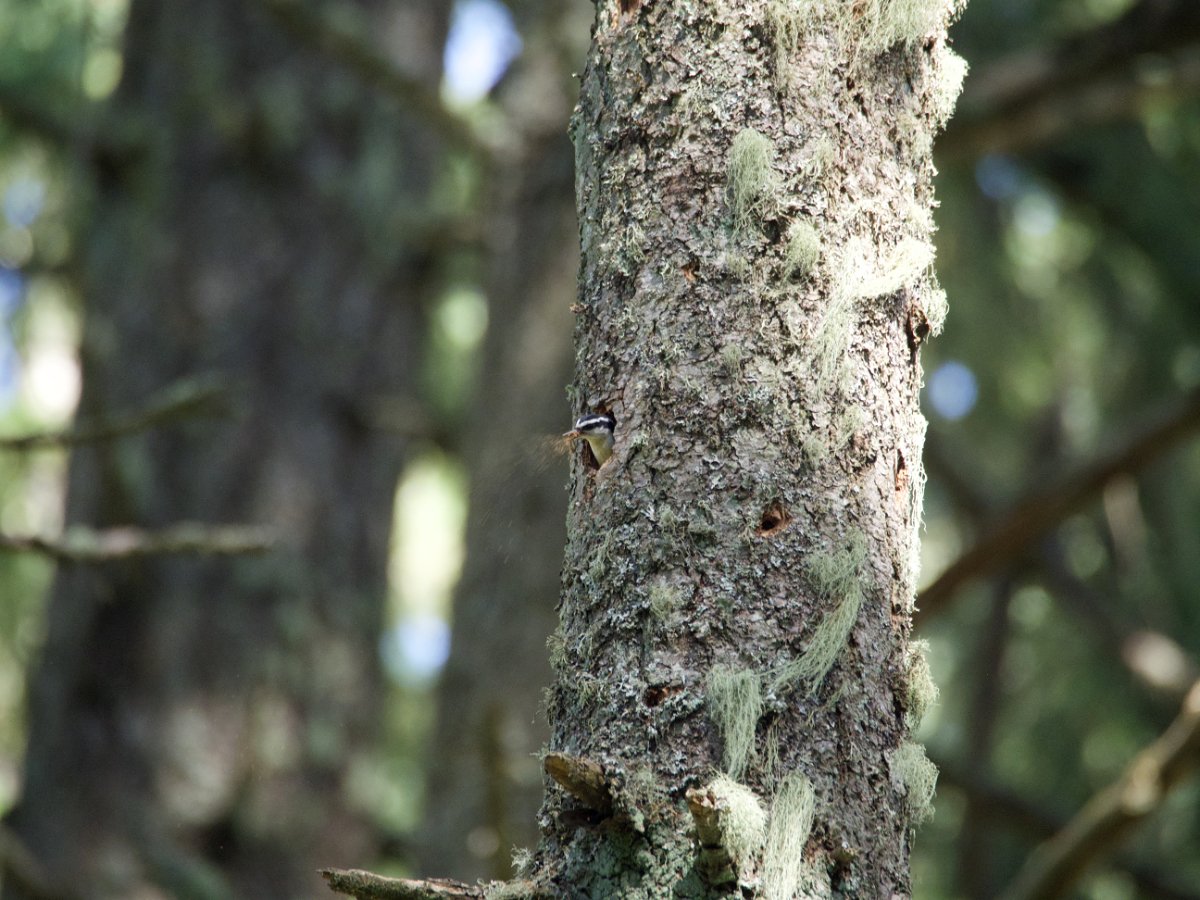I found a pair of violet-green swallows nesting in a natural cavity of an Oregon ash tree. There were small, dead branches right outside of the entrance that made the perfect perch. As the female landed and began to preen her feathers, I could see that she had developed a brood patch.
For an egg to develop normally and hatch, a certain temperature range must be maintained. One of the ways birds achieve this is by sitting on the eggs and incubating them. To help facilitate the transfer of heat from the parent to the egg, birds temporarily develop a bare patch of skin on their belly called a brood patch. Certain hormones are produced that cause the feathers to fall out in this spot and to create additional blood vessels in the bald area to help transfer warmth to the eggs. Some birds, such as ducks and geese, may pluck their feathers to create a brood patch. The feathers that are shed can also be used to insulate the nest to help with temperature regulation. The time spent incubating eggs varies based on the insulating properties of the nest and the temperature of the environment. The bird can sense the temperature of the eggs through its brood patch and will adjust its time spent incubating the eggs accordingly. Birds will also periodically turn the eggs to warm them evenly and prevent the embryo from sticking to the shell.
Nature is an inexhaustible source of wonder. I hope to see you out there.
Resource
Ehrlich, Paul R., et al. The Birder’s Handbook: A Field Guide to the Natural History of North American Birds Including All Species That Regulary Breed North of Mexico. Simon & Schuster, 1988.











